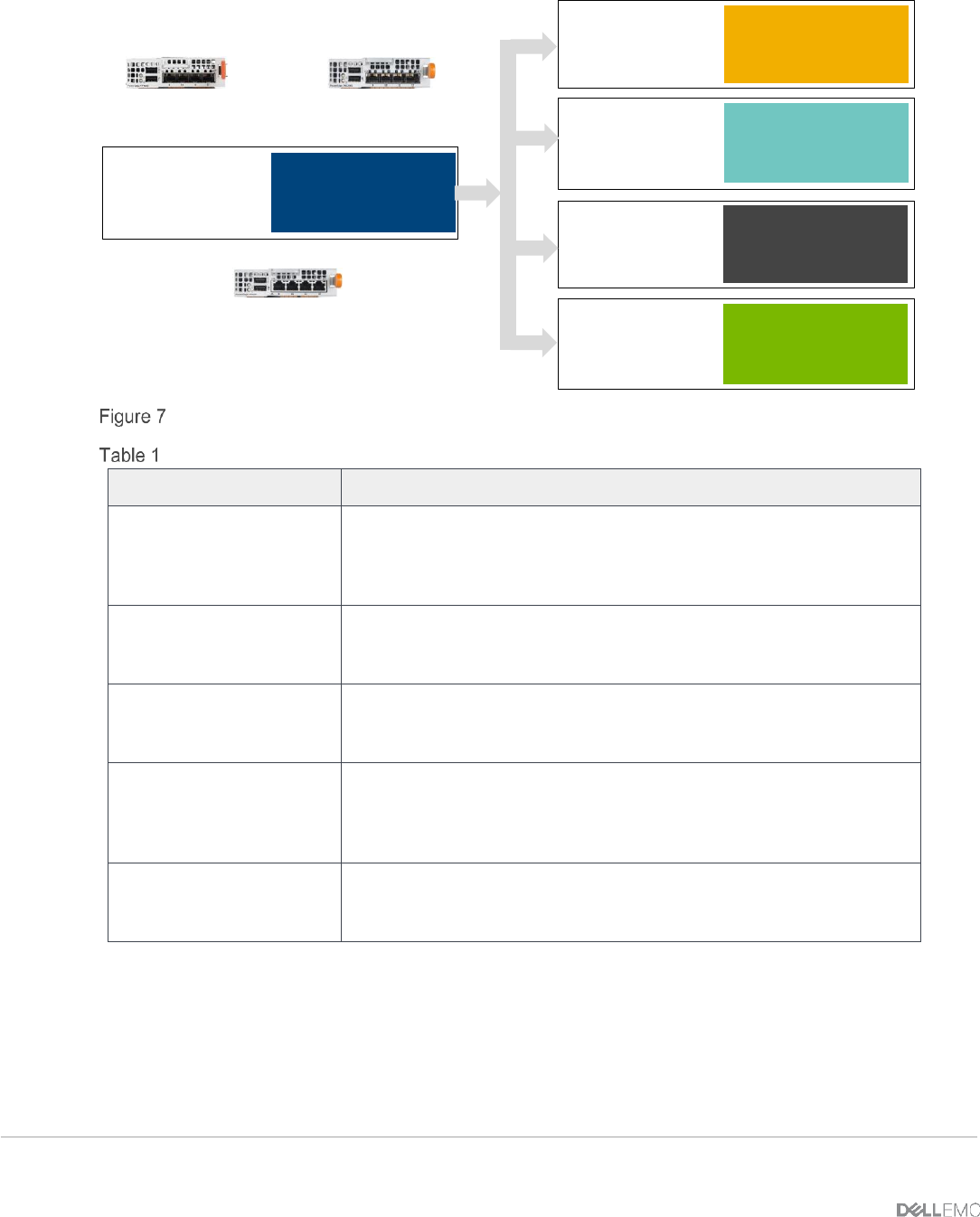Deployment Guide
Table Of Contents
- 1 Introduction
- 2 The Dell FX2 and FN I/O Modules
- 3 Initial out-of-box connectivity check and default settings
- 4 VLT and the example environments
- 5 FN IOM Dell Blade I/O manager and internal port mapping features
- 6 Environment One: Basic VLT deployment with VLT mode
- 7 Environment Two: Dell Networking switches with mVLT and IOM in Full Switch mode
- 8 Environment Three: Dell Networking switches with mVLT and FN IOM in programmable MUX mode.
- 9 Environment Four: VLT interoperability with Cisco vPC
- A References
- B Components
- C Terminology
- D Reset FN IOM to Default Factory Configuration
- E FN IOM initial out-of-box configuration and default settings
- F Support and feedback

10 PowerEdge FX2 – FN I/O Module – VLT Deployment Guide | Version 2.2
Standalone Mode
(Default mode)
Stacking
Mode
VLT Mode
PMUX
Mode
Automated mode
No Customization
I/O Aggregation
I/O Aggregation
Offers Active-Active
multi-path for servers
Semi-customization
Full-switch
Mode
I/O Aggregation
Creates a stack up to 6
units
Semi-customization
I/O Aggregation
Offers custom
configurations using CLI
Moderate customization
L2/L3 switching
Everything needs to be
configured using CLI
Full customizations
FN410S
FN410T
FN2210S
FN Series operational modes
IOM modes and descriptions
IOM mode
Description
Standalone mode (SMUX)
This is the factory default mode for the IOM. SMUX is a fully
automated, zero-touch mode that allows VLAN memberships to be
defined on the server-facing ports while all upstream ports are
configured in port channel 128 and cannot be modified.
VLT mode
In this low-touch mode, all configurations except VLAN membership
are automated. Port 9 is dedicated to the VLT interconnect in this
mode.
Programmable MUX mode
(PMUX)
PMUX mode provides operational flexibility by allowing the
administrator to create multiple LAGs, configure VLANs on uplinks
and to configure DCB parameters on the server-facing ports.
Stacking mode
In Stacking mode, multiple switches can be combined to make a
single logical switch, which is managed by a designated master unit in
the stack. This mode can be useful because it simplifies management
and redundant configurations.
Full Switch mode
In Full Switch mode, all switch features are made available. This mode
requires the most configuration, but allows for the most flexibility and
customization.










